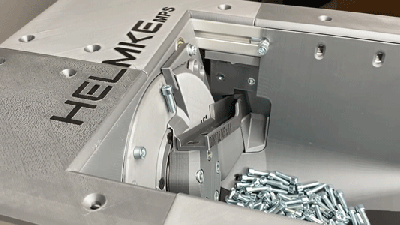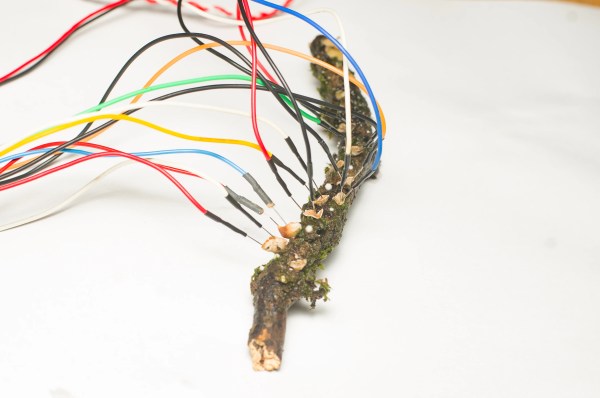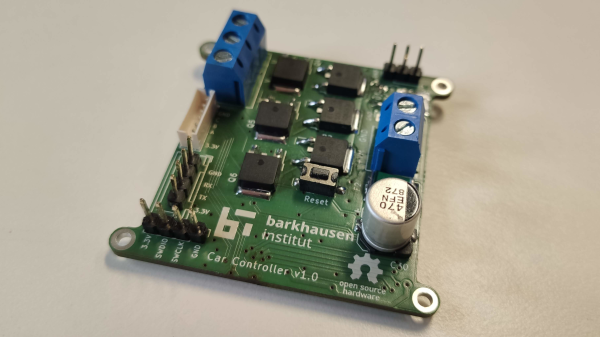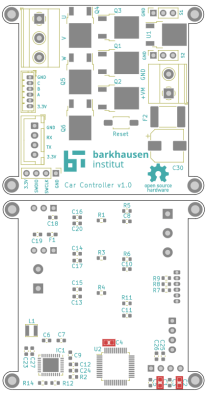Flexible PCBs have become increasingly common in both commercial devices and DIY projects, but Panasonic’s new stretchable, clear substrate for electrical circuits called Beyolex takes things a step further. The material is superior to existing stretchable films like silicone, TPU, or PDMS due to its high heat tolerance (over 160° C) for the purposes of sintering printable circuit traces.
But, a flexible substrate isn’t very useful for electronics without some conductive traces. Copper and silver inks make for good electrical circuits on stretchable films, and are even solderable, but increase resistance each time they are stretched. Recently, a team out of the University of Coimbra in Portugal has developed a liquid metal ink that can stretch without the resistance issues of existing inks, making it a promising pair with Panasonic’s substrate. There’s also certain environmental benefits of printing circuits in this manner over traditional etching and even milling, as you’re only putting conductive materials where needed.

After the break, check out Panasonic’s earlier videos showing some of their demo circuits that include a stretchable NFC antenna harvesting electricity even while submerged in water and an LED matrix performing while being, bent, rolled, and stretched. We’re excited to see where this technology leads and when we hackers will be able to create our own stretchable projects.
A great many flexible PCB projects have graced Hackaday, from early experiments to sophisticated flexible PCB projects. Heck, we had a whole Flexible PCB Contest with some awesome flexible projects.
Continue reading “Truly Flexible Circuits Are A Bit Of A Stretch”

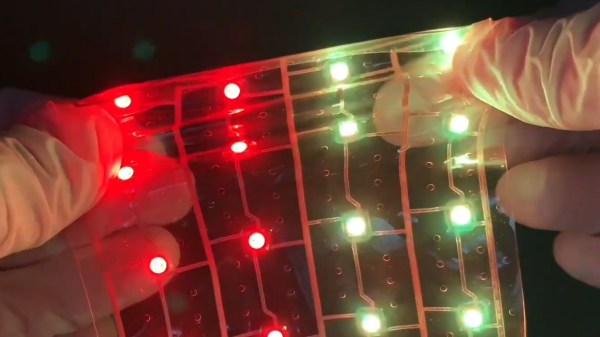

 You might have heard the term “bifurcation” if you’ve been around PCIe, especially in mining or PC tinkering communities. This is splitting a PCIe slot into multiple PCIe links, and as you can imagine, it’s quite tasty of a feature for hackers; you don’t need any extra hardware, really, all you need is to add a buffer for REFCLK. See, it’s still needed by every single extra port you get – but you can’t physically just pull the same clock diffpair to all the slots at once, since that will result in stubs and, consequently, signal reflections; a REFCLK buffer chip takes the clock from the host and produces a number of identical copies of the REFCLK signal that you then pull standalone. You might have seen x16 to four NVMe slot cards online – invariably, somewhere in the corner of the card, you can spot the REFCLK buffer chip. In a perfect scenario, this is all you need to get more PCIe out of your PCIe.
You might have heard the term “bifurcation” if you’ve been around PCIe, especially in mining or PC tinkering communities. This is splitting a PCIe slot into multiple PCIe links, and as you can imagine, it’s quite tasty of a feature for hackers; you don’t need any extra hardware, really, all you need is to add a buffer for REFCLK. See, it’s still needed by every single extra port you get – but you can’t physically just pull the same clock diffpair to all the slots at once, since that will result in stubs and, consequently, signal reflections; a REFCLK buffer chip takes the clock from the host and produces a number of identical copies of the REFCLK signal that you then pull standalone. You might have seen x16 to four NVMe slot cards online – invariably, somewhere in the corner of the card, you can spot the REFCLK buffer chip. In a perfect scenario, this is all you need to get more PCIe out of your PCIe.
